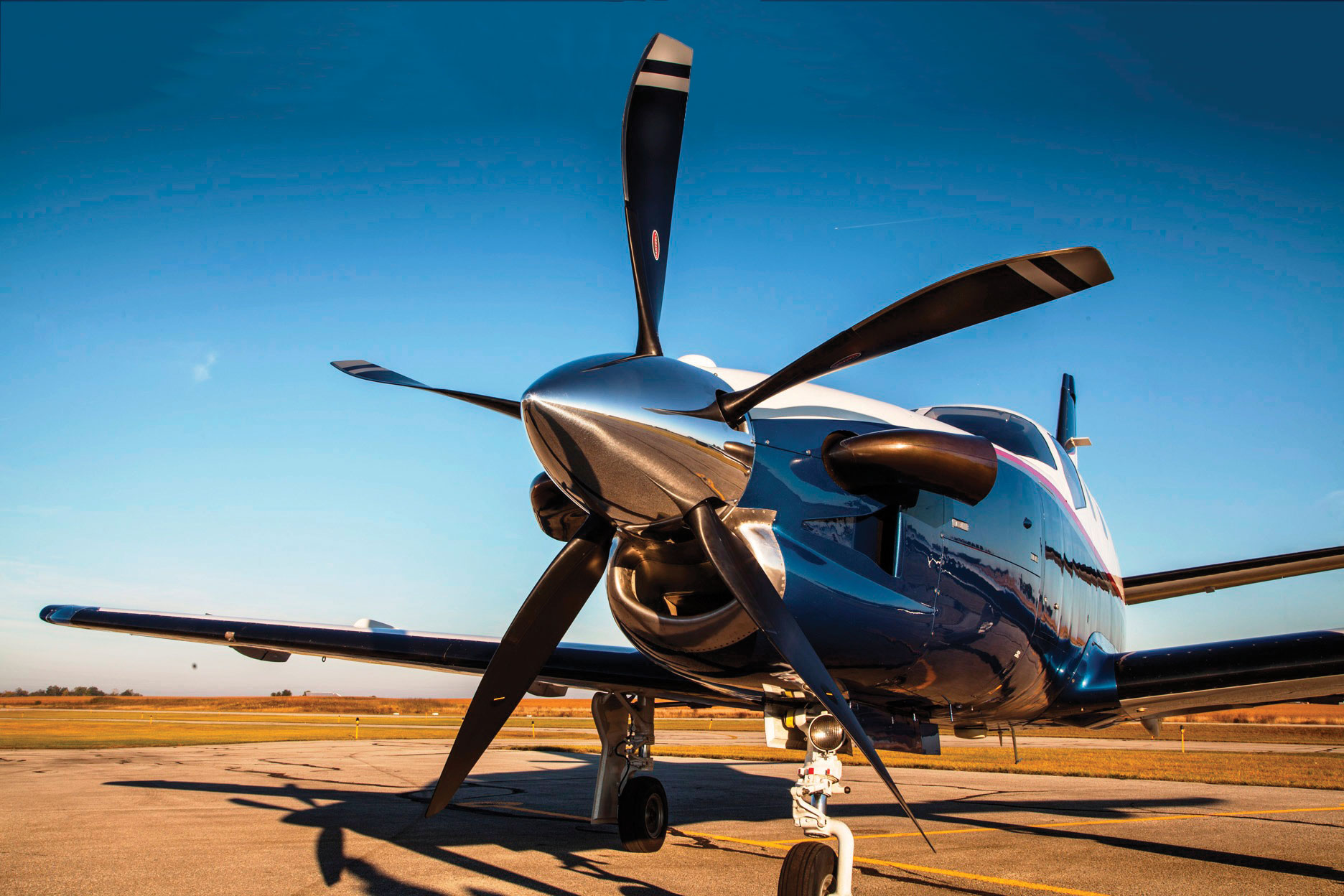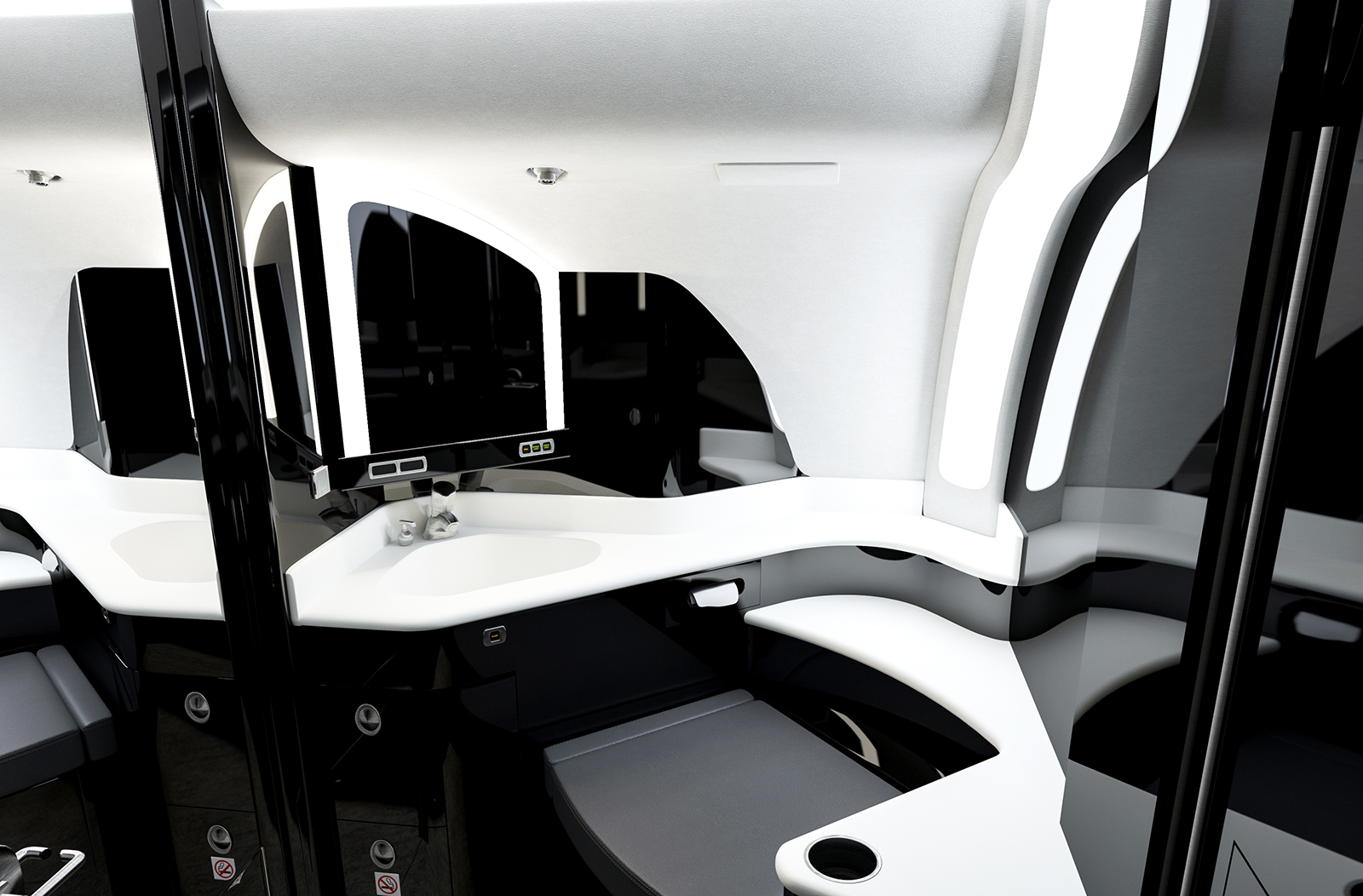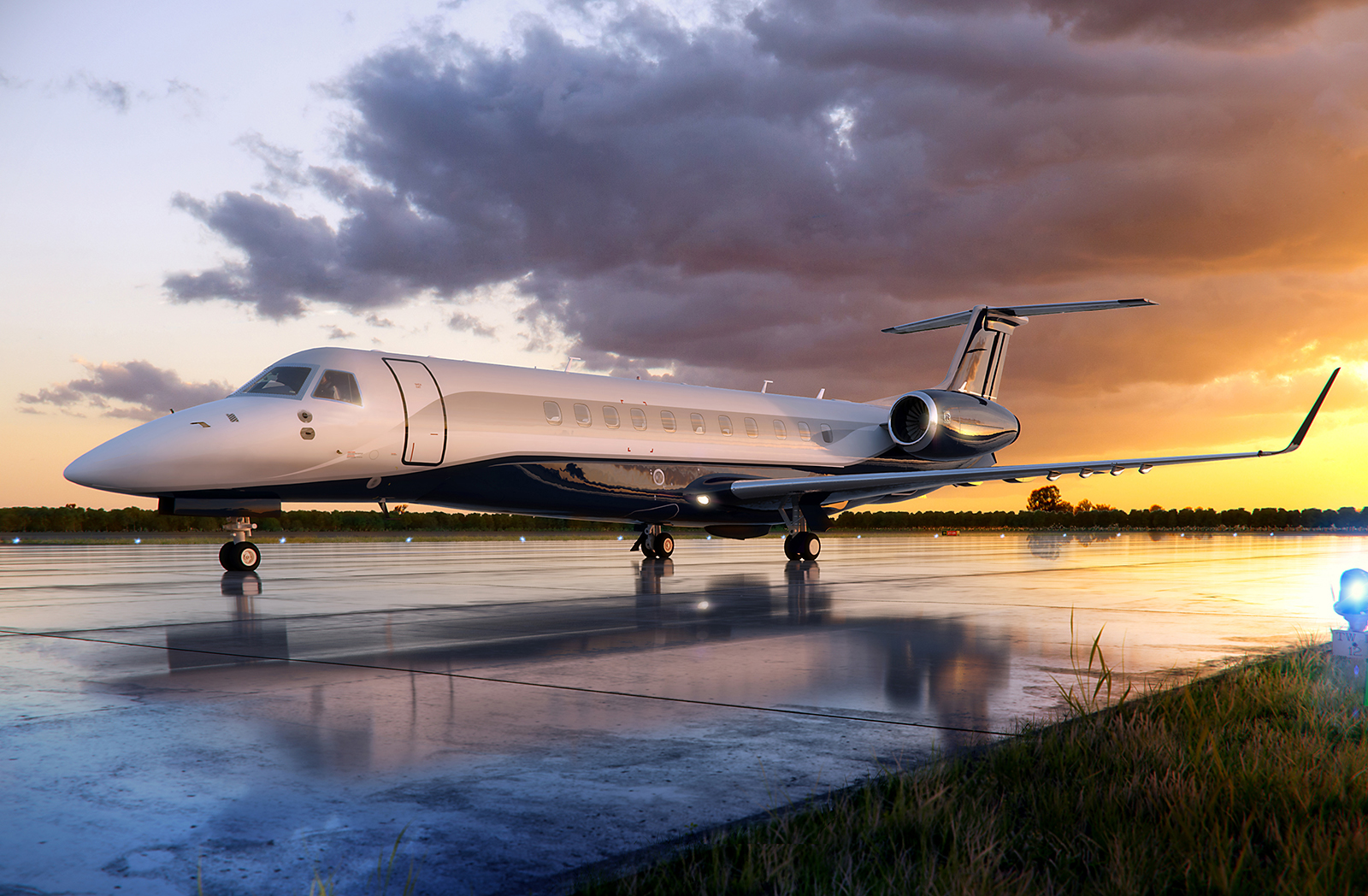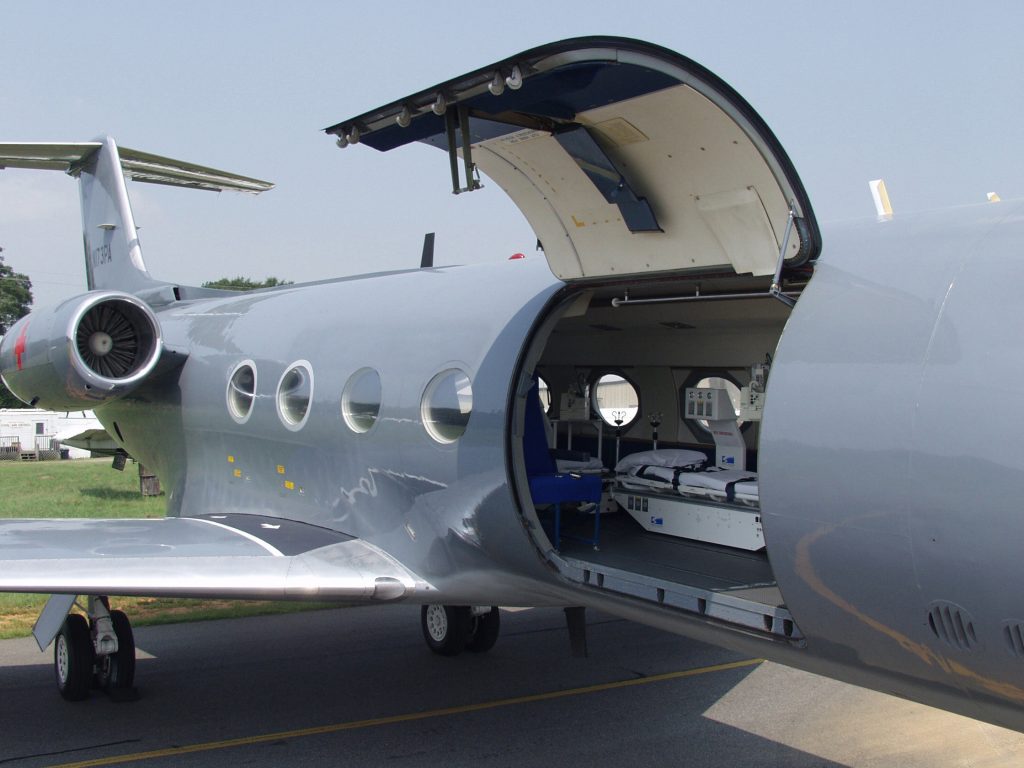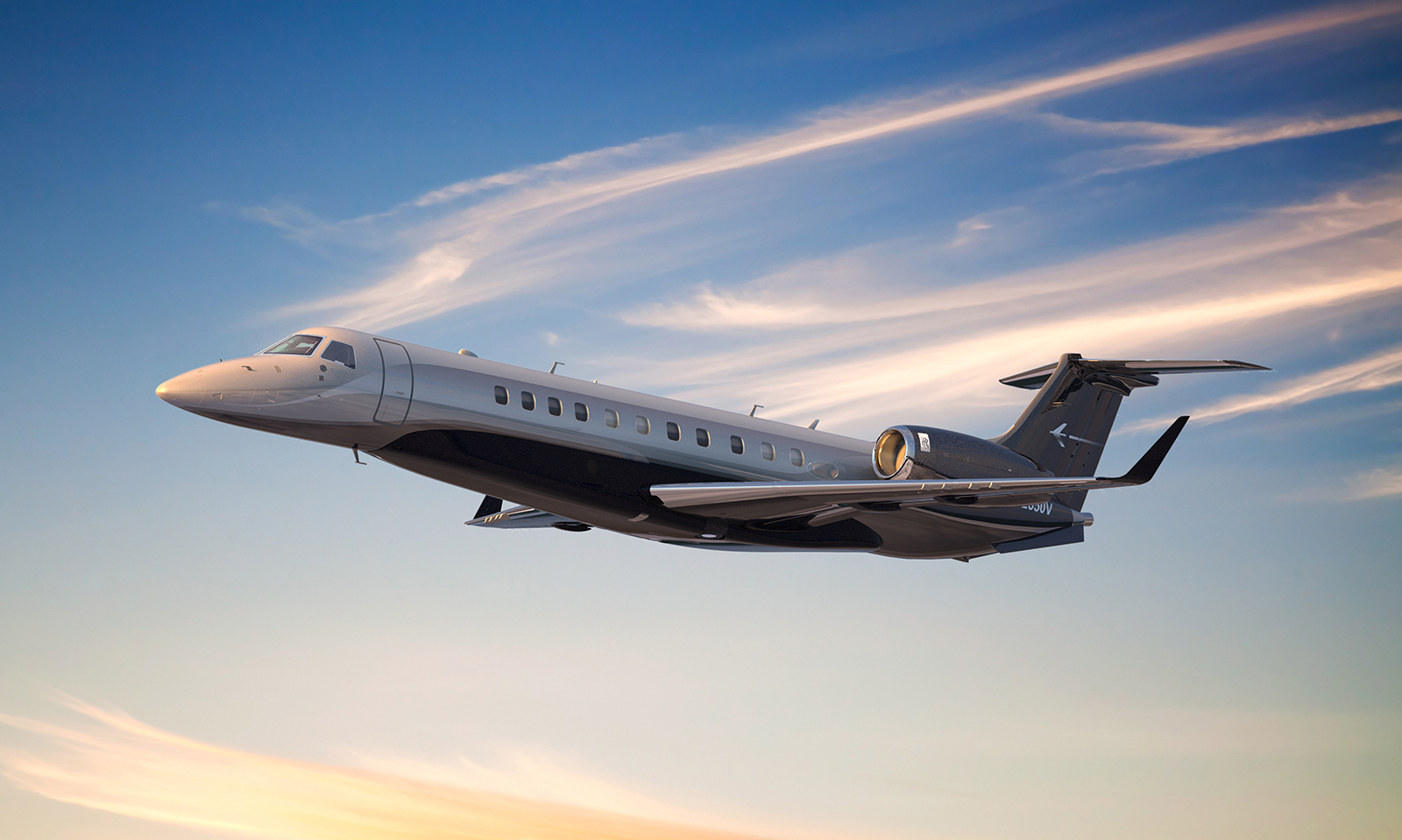[ad_1]
1. Turbine Triumph:
The power of engines, as historically demonstrated, extends beyond the thrust they produce to move airplanes. They also move passenger-toward a particular aircraft, when it is powered by the type that attracts them.
When the first long-range, pure-jet airliners appeared at the end of the 1950w in the form of the de Havilland DH.106 Comet, the Boeing 707, and the Douglas DC-8, it was concluded that this technology would be restricted to those sectors, since its speed could not be adequately exploited over shorter ones, leaving them the domain of piston aircraft, such as the Convair CV-440 Metropolitan and the Martin 4-0-4.
What was underestimated was the power the pure-turbine had to draw passengers to such airplanes, causing them to demand and ultimately expect this engine type on all route types. And manufacturers responded.
By the early-1990s, history repeated itself. The turbine, it was thought, could never be economically viable on regional-range routes, once again leaving the piston and later turboprop airliners with capacities of between 19 and 50 to serve them. But, when Canadair sparked the regional jet revolution with its 50-passenger CRJ-100 and Embraer closely followed suit with its own ERJ-145, there seemed no market for which the turbofan was not suitable-except, perhaps, for the very thin one, supporting no more than 30 seats.
Passengers again responded. And consensus was once again proven wrong.
2. Regional Jet Revolution:
Although powerplants usually precede designs, in the case of the regional market, designs preceded powerplants and provided the crossroads between larger airliners, business jets, and turboprop aircraft. Regional jets could thus originate from four potential sources.
The first, as previously mentioned, trace their roots to business jets-in this case, to the Canadair CL-600/-601 Challenger, which bred the stretched-fuselage regional airliners that followed it. In the second case, Embraer adopted the twin-turboprop EMB-120 Brasilia into a pure-jet counterpart, the ERJ-145. In the third, an existing airliner, intended for longer-range sectors, was scaled-down to produce a lower-capacity derivative, as had occurred with the MD-95/717, a shrink of the MD-90, and the A-318, a shorter-fuselage version of the A-319. Finally, regional jets originate as all-new designs, such as the Vereinigte Flugtechnische Werke VFW-614, the western world’s first 44-seat regional jet; the Fokker F.28 Fellowship, which was succeeded by the modernized F.70 and F.100; and the British Aerospace BAe-146, which itself begot the re-engined Avro International RJ70 to -100 family.
All of these types fueled the regional jet revolution, which created a fundamental change in the market, mirroring the impact the pure-jet engine first had on the long, then medium-, and finally short-range routes, and blurring the line between the major and regional carriers. It also became the most rapidly growing segment of the industry.
According to the Department of Transportation (DOT) report entitled “Regional Jets and their Emerging Roles in the US Aviation Market,” seven US carriers operated 99 regional jets between 126 city pairs and served 103 markets from ten hubs at the beginning of 1998. The domestic regional jet fleet at the time was expected to double, to 200 aircraft, by January of the following year.
And these figures only escalated like the clockwise rotations of analog altimeters installed in climbing aircraft. Indeed, in order to remain competitive and retain market share, airlines were forced to order regional jets. Almost 80 percent of the 570 regional airliners ordered in 1998 were for pure-jets, eclipsing, for the first time, the number of turboprop deliveries the following year with 217 jets as opposed to 120 turboprops. By 2000, 726 regional jet sales were recorded, a 42-percent increase over the year-earlier period and it constituted more than 90 percent of all regional airliners ordered. The diminishing popularity of turboprop types, resulting in a 28-year low in sales, saw the sunset on once ubiquitous models, such as the British Aerospace J41 and the Saab 340 and 2000.
These sales figures, however, reflected more than passenger popularity. Compared to heavier twins, such as earlier BAC-111s and DC-9s-which had not been designed for regional routes, but which were artificially suited for some of them because of then significantly lower fuel prices-aircraft intended, from inception, for this purpose, offered two advantages: their lower structural weights burned less fuel and were rewarded with reduced landing fees, and their decreased thrust capabilities optimized them for lower cruise speeds, since a greater portion of regional flight sectors entail the climb and descent phase than do longer ones.
Barry Eccleston, Executive Vice President of Fairchild-Dornier Aerospace, predicted that the market for regional jets accommodating a maximum of 110 passengers would be worth some $205 billion, amounting to 9,000 aircraft, over the first two decades of the 21st century-or more than two-thirds the $280 billion-worth of ultra large capacity airlines, such as the Boeing 747-8 and the Airbus A-380-except that the regional segment of the industry represented seven times the number of airplanes. He also identified four phases of the regional jet revolution.
The first, entailing the initial breed of 50-seat Canadair CRJ-100s and -200s and Embraer ERJ-145s served to prove the concept, attract the passengers, and demonstrate the economic feasibility of it, its roots planted by Comair in the US and Lufthansa CityLine in Europe. The former initially provided feed to major carrier hubs and the latter bypassed them and instead served short and/or thin sectors between secondary city pairs.
Paving the way by demonstrating the overwhelming passenger acceptance of these aircraft, the 50-seat regional jet planted the seed for the second phase, establishing the seamless service interchange between mainline and microjets and creating demand for pure-jet service on routes even too thin for the 50-seaters. Scaled-down for accommodation of between 30 and 40, these types could altogether replace the comparably sized turboprops, especially since a design such as the ERJ-135, although a smaller derivative of the original -145, was itself a development of the Brasilia turboprop.
Like a rolling snowball, once the concept gained momentum, it was unstoppable and increased in size. So, too, did the aircraft representing the third phase, which offered capacities not unlike the traditional short- to medium-range twins, but at decidedly lower seat-mile costs. Examples of these were the Fokker F.28 Fellowship, the British Aerospace BAe-146, the Fokker F.70 and F.100, the Avro International RJ70 to -100, the Bombardier CRJ-700 to -1000, the Embraer ERJ-170 to -195, the Antonov An-148 and -158, the Sukhoi Superjet 100, and the Bombardier CS-100.
Regional jets accommodating 100 passengers, but flown by major carrier crews because of pilot scope clauses prohibiting their operation characterized the fourth phase.
Closing the gap between major and regional airline profiles, this type of operation entailed the replacement of first generation twins, such as DC-9s and 737s, with their advanced, higher-capacity regional counterparts, yet offered comparable levels of comfort, service, and speed on thinner, point-to-point, hub-bypassing sectors-in the process reducing airport congestion.
Integral to this quad-phase regional jet revolution-and particularly to the second of them-was, of course, the 37-seat Embraer ERJ-135. But, before it even flew, it had competition across the Atlantic, in Europe, in the form of another turboprop-turned-turbofan, the even-smaller Fairchild-Dornier Do-328JET.
3. From Turboprop to Turbofan:
Founded as Dornier-Metallbauten in 1922 by Professor Claude Dornier, that company was known for its massive, 12-engined, Do-X flying boat, becoming Daimler GmbH in 1972 and Daimler-Benz Aerospace 15 years later, when Daimler-Benz itself acquired a majority share holding. It was finally designated Daimler-Chrysler.
Its high-wing, twin-turboprop commuter aircraft, offered in 15-passenger Do-228-100 and 19-passenger Do-228-200 versions, amounted for 270 sales, and led to a 34-seat successor.
Seeking to divest itself of what had intermittently become a loss-making subsidiary, it sold a majority stake of Dornier Luftfahrt, located near Munich, in Oberpfaffenhofen, Germany, to San Antonio, Texas-based Fairchild Aerospace in 1996. Fairchild itself built the venerable 19-passenger Metro commuter turboprop, which sold in excess of 600 during a 35-year production run, and was initially an international partner in the 34-seat Saab-Fairchild SF-340, which accounted for 456 sales.
The Do-328, in the eyes of new owner Fairchild, had potential, and its strength-literally-lay in its robust, German over-engineered design. Already the second-fastest turboprop regional airliner after the 50-passenger Saab 2000, it lent itself to a minimal-modification retrofit with pure-jet engines, although former design owner Daimler-Benz had consistently failed to see the feasibility of the project.
But additional impetus came from several less-than-positive circumstances. The pure-turboprop version, already weighing 2,200 pounds more than targeted and subjected to high production costs, suffered from fierce competition with similar types, such as the Fokker F.50, itself the product of DASA’s previous Dutch subsidiary, and sales were sluggish.
Based upon Fairchild-Dornier’s survey of 50 worldwide airlines conducted between October of 1996 and January of 1997, passengers preferred turbofans, regardless of route type and length, and a turboprop-to-turbofan transition was not only logical, but left little choice, provided it could offer comparable performance and economics.
Powerplant popularity, however, was not the only factor behind airlines’ orders. One of the latest attractions was the ability of an aircraft manufacturer to offer a family of regional jets, as was beginning to occur with Bombardier and Embraer, so that derivative-associated design similarities and common pilot type ratings would offer the cost-effective flexibility to match capacity to route type and departure time.
Although Embraer’s own scaled-down regional jet was now on the horizon, the economics of such 30-seaters had yet to be proven. Nevertheless, if they could, this type of design was foreseen as fulfilling two purposes: (1). It could replace comparably sized turboprops on existing routes, and (2). It could create an entirely new market-one too long for a turboprop’s speed, yet too thin for the higher-capacity of the increasingly common, 50-passenger regional jets, thus heralding a new class of aircraft.
If successful, it could potentially replace some 1,200 aircraft in US service alone. With the ERJ-135 about to become the second member of Embraer’s regional jet family, and the Do-328 notching up less-than-stellar sales, Fairchild-Dornier had little choice but to combine its existing airframe with turbofan engines or concede the race-already as a distance third-to the other two contenders.
4. Do-328JET:
Modifications to the turboprop’s turbofan counterpart and, in many ways, successor, were few.
Because the fuselage was milled from solid material, the aluminum alloy for the pure-jet version retained more at frames 24 and 26, which corresponded to the wing and undercarriage attachment areas, while the upper-fuselage fairing, which served as the blending point for the wing, was also retained, as were the two aft, ventral strakes previously required by the turboprop’s air flow. Although the powerplant change had rendered them superfluous, they were not removed in order to avoid recertificaton costs.
The newly designated Do-328JET featured a 68-foot, 73/4th-inch fuselage and 69-foot, 9 3/4th-inch overall length.
Utilizing the same TNT (Tragfluegels neuer Technologie), supercritical wing as its Do-328 predecessor-which was originally designed for the smaller Do-228-and equally employing solid-milled skins to minimize the amount of riveting, the regional jet sported a unique planform. Aside from differing in its high-wing mounting, it featured highly-swept leading edges near the wing tip, parallel edges inboard of the engines, and a trapezoidal shape outboard of them.
Combined with the turbofans’ thrust capability, its wings, which retained the turboprop’s inflatable, leading edge boot deicing system, facilitated short-field performance, yet feisty climb rates (of 14.2 minutes to 31,000 feet), offering comparable block times to the ERJ-135 with which the aircraft would eventually compete.
High-lift devices encompassed single-slotted trailing edge Fowler flaps.
Internally, the Do-328JET’s wings incorporated a 200-liter fuel capacity increase, dual fuel pumps, and 30-percent larger-diameter fuel lines.
Sporting a 68.10-foot span and 430.6-square-foot area, they introduced a 100-mm trailing edge flap extension and thus increase in chord, rendering an 11.0 aspect ratio, for an ultimately targeted 400-knot cruise speed.
Like the turboprop -328, the regional jet retained the t-tail, but introduced a larger rudder trim tab to counteract the engines’ greater thrust.
The pylon-mounted, thrust-reverser devoid, 6,050 thrust-pound Pratt and Whitney Canada PW306B engines themselves, replacing the nacelle-shrouded turboprops, were originally developed as -306As for the Galaxy business jet and incorporated an 840-mm, 22-bladed, wide-chord fan; a five-stage high pressure compressor (four axial and a single centrifugal); a two-stage high pressure turbine; and a three-stage low pressure turbine. Compared to the corporate version, the commercial powerplant offered a 30-percent increase in core flow and higher temperature-resistant materials in the high pressure turbine.
In order to cater to the Do-328JET’s increased weights, the twin-wheeled, hydraulically-actuated, tricycle undercarriage featured a Dunlop dual-braking system, with carbon disc brakes; a reinforced trailing link; and an anti-skid system to compensate for the lack of engine thrust reversers. Its nose wheel retracted forward, while its two main units were stored in fuselage-side fairings.
An AlliedSignal GTCP36-150 auxiliary power unit (APU) provided power for cabin lighting and air conditioning and engine starts.
Aircraft access was attained by means of a forward, left, out- and downward-opening, airstair- and handrail-equipped Type I crew and passenger door; a Type III emergency exit apposite it, on the forward, right side; a second Type III emergency exit on the aft, left side; and a Type II galley servicing door on the aft, right side.
Standard cabin configuration entailed 32 to 34 three-abreast, one-two-arranged seats at a 30- to 31-inch pitch and an aft galley and lavatory. Because of the 4,000-foot altitude increase in the Do-328JET’s service ceiling-to 35,000 feet-cabin pressurization was equally increased-from 7.0 to 7.4-psi, yielding an 8,000-foot elevation. Internal dimensions were 33 feet, 10 3/4th-inches in length and six feet, 2.5 inches in height.
Baggage, cargo, and mail were stored in the main deck compartment located between the aft cabin wall and the rear pressure bulkhead and accessed via a port door.
5. Flight Test Program:
Unlike clean-sheet design flight test programs, the Do-328JET’s entailed considerable comparison-between the handling and performance of what had been a 365-knot turboprop to one penetrating the 400-knot realm with pure-jet engines. The transition from one to the other had been even less of a leap than initially imagined, since the first -328JET prototype had been nothing more than the turboprop’s second prototype and even retained several of its features.
That prototype itself, registered D-BJET and rolled out for the first time on December 6, 1997 for public viewing, made its maiden flight from the 7,800-foot runway at Fairchild-Dornier’s Oberpfaffenhofen, Germany, complex at 11:16 on January 20 of the following year, piloted by Meinhardt Feuersenger, Chief Test Pilot of the Do-328 turboprop program, and Peter Weger, who, in 1994, had first flown the Eurofighter EF2000.
Maintaining a southerly course over the Bavarian Alps, the aircraft, slated to gauge performance and test envelope expansion, attained a 220-knot speed and 25,000-foot altitude during its almost two-hour sortie.
Evaluating the prototype’s performance in comparison to the turboprop foundation upon which it was based, Feuersenger noted the absence of propeller wash and the smooth, over-wing air flow, no longer needing to continually retrim it as a result of power setting changes. Performance either approximated or exceeded computer calculations.
Assessing the regional jet after landing, Feuersenger said it performed “flawlessly” and “pilots will love this aircraft.”
Three other prototypes took part in the 18-month, 950-flight, 1,560-hour flight test program, which was delayed by four months because of the need to redesign the Dunlop braking system and Messier-Dowty shock absorbers to cater to the aircraft’s deceleration without propeller braking effects. Aircraft D-BWAL, first flying on May 20, was involved in performance certification testing. Avionics integration, the realm of the third prototype (D-BEIR), commenced with its July 10 first flight, and function and reliability testing began three months later, on October 15, when the fourth prototype first took to the air.
The first production-standard aircraft, featuring a five-foot wingspan increase and 8,160-pound fuel capacity, entered its intended aerial realm after the four prototypes.
6. Test Flight:
Initial Do-328JET performance could be gauged by the test flights its prototypes undertook.
The aircraft’s two-person cockpit, with a Honeywell Primus 2000 integrated avionics system, featured five, eight-by-eight-inch CRT displays, the primary flying (PFD) and multifunction (MFD) displays duplicated before each pilot and the engine instrument and crew advisory system (EICAS) located in the center.
The reclinable seats, with five-point harnesses, were equipped with storable armrests and were adjustable forward and aft.
Engine starts, using bleed air from the auxiliary power unit, were automatic, their parameters registered by the full authority digital engine control (FADEC).
After the flight plan had been entered into the flight management system (FMS) and the windshield panels had been electronically heated to prepare them for bird strikes or other foreign object impact eventualities, the twin-jet was steerable by means of its rudder pedals, provided the variation was no more than ten degrees to either the left or right, although sharper turns required the nose wheel steering tiller.
The aircraft was offered with two gross weights. The lower, designated the Do-328-300, could carry a 7,200-pound payload, had a maximum take off and landing weight, respectively, of 33,510 and 31,063 pounds, and a 740-nautical mile range with this payload and reserves at a 31,000-foot altitude. The higher, designated the Do-328-310, could carry an 8,104-pound payload, had a 34,524-pound take off weight and a 31,724-pound landing weight, and a 900-nautical mile range.
A corporate version, the Envoy 3, typically accommodated between 12 and 19 in layouts specified by the operator, but which usually included easy chairs, tables, work stations, divans, sofas, wardrobes, galleys, and lavatories. Additional fuel tankage increased its range to 2,000 nautical miles.
Calculated and entered take off reference speeds varied, of course, according to gross weight and atmospheric conditions. A 27,488-pound ramp weight, for example-including 5,000 pounds of fuel-resulted in V1, VR, and V2 speeds, respectively, of 103, 110, and 117 knots in prototype D-BJET.
Flap settings included 12 degrees for take off, 20 for approach, and 32 for landing.
With the altitude, airspeed, attitude, vertical speed, and cleared altitude visible on the PFD, and the departure track on the MFD, the aircraft, cleared for take off and brake-released, initiated its acceleration run, its throttles advanced and its PW306B turbofans under FADEC control.
A 15-degree pitch angle ensured a best rate-of-climb of a little over 5,000-fpm.
Cruising at its 35,000-foot service ceiling, it assumed a Mach 0.69 speed with a 97.6-percent N1 fan, resulting in a 1,797-pound-per-hour fuel burn. Maximum cruise speed, at 25,000 feet, was 405 knots.
A 4,000-fpm descent rate, to 20,000 feet, was accomplished with a flight-idle power setting and Mach 0.61 airspeed.
The elimination of the previous version’s propellers necessitated a 20-knot increase in approach speed and ground spoilers automatically deploy after touchdown.
7. Sales and Service:
Sales, as with any other aircraft, depended upon quality, price, and the ability to fulfill its design goals. In the case of the Do-328JET, however, that aircraft actually created-and needed to create-its own market niche and therein lay the first obstacle to its orders-namely, was there a requirement for a 30-seat regional jet with in-house competition from its own turboprop and from the likes of the British Aerospace J41, the Embraer EMB-120, and the Saab 340, and could it fulfill its mission as economically as these types?
Not all carriers were likely to follow the 30-passenger pure-jet trend, especially those that saw little benefit in operating a type which was not part of a family, a strong competitive advantage Bombardier and Embraer both enjoyed over Fairchild-Dornier.
So similar, in fact, were its turboprop and turbofan siblings that they shared the same production line and airlines were able to wait until six months before scheduled delivery to choose a powerplant type.
Several factors, however, seemed to indicate its need.
Analyses of 300- to 1,000-mile route sectors revealed that they were either too infrequently served or were done so with inappropriately sized equipment, resulting in low load factors.
Seeking to exploit the former case-in which demand often exceeded capacity-Fairchild-Dornier foresaw initial-and ideal-deployment on traditional 19-seat turboprop routes, which it envisioned as stimulating demand because of its cabin class comfort, in-flight service, and pure-jet speed, the same way the 50-seat regional jets had “recreated” the 30-seat turboprop market.
Finally, because of restrictions inherent in US pilot scope clauses, dictating the number of regional jets that could be operated by major-aligned, code-share partner carriers, orders for turbofan aircraft accommodating 50 passengers or more were limited. Falling below this restriction with its 32 to 34 seats, the Do-328JET was exempt from these regulations. At the same time, it gave carriers the opportunity to close the lower-end service gap between traditional-turboprop capacity and that of the new breed of regional jets, enabling them to substitute mainline flights with increased, businessman-attracting frequencies and those operating during off-peak, service-scarce or altogether -devoid times, particularly midday.
Orders, as with any aircraft, increased as the program progressed. Launched during the 1997 Paris Air Show, the program itself attracted initial orders for six aircraft from Proteus Airlines, based in Dijon, France, and Aspen Mountain Air of the US for four. At the time of its first flight, there were 17 firm and 15-optiioned orders, and by July of 1998, there figures had respectively increased to 51 and 28, of which 11 were for Envoy 3 business versions. Continuing to mount, these totals increased to 75 and 101 by February of 2000 and 141 and 91 by early-2002.
Skyway Airlines, “the Midwest Express Connection” established in 1993 by Midwest Express itself to serve short-range routes and provide feed to mainline flights at its Milwaukee hub with a fleet of 15 19-passenger B1900Ds, took delivery of the first Do-328JET on August 4, 1999, employing it on route-proving sectors before inaugurating it into scheduled service two months later, on October 6.
Although the B1900Ds were suited to certain routes, they created a capacity gap in mainline Midwest’s fleet, whose aircraft featured four-abreast leather seats and premium, all-business class service. Skyway’s Beech aircraft offered little more than standup headroom.
Because 75 percent of Skyway’s traffic was origin-and-destination in nature, and these passengers seldom experienced its parent’s full-service product, its reputation was less than it should have been.
What was needed was an airplane that could accommodate half that of its DC-9s, but offer comparable speed, comfort, and service. The 50-seat CRJ-100/-200 and ERJ-145, considered too close in capacity to them, were quickly discounted.
The solution lay in Fairchild-Dornier’s microjet, of which five were ordered, with another ten on option, and they were seen as serving four purposes.
1). Increase capacity on existing Skyway routes.
2). Inaugurate service between city pairs too dense for its 19-seat B1900Ds, yet too thin for Midwest Express’s own 60-seat DC-9-14s.
3). Replace these DC-9s on short, low-density sectors
4). Add frequency to existing Midwest Express routes during off-peak times.
Featuring the same leather seats, carpets, and sidewall patterns as its parent’s DC-9s, it was able to offer identical service, with cocktails, hot towels, hot snacks, and freshly baked cookies from the aircraft’s dual-oven equipped galley.
Inaugural Do-328JET routes, from Milwaukee, included Grand Rapids, Pittsburgh, Nashville, and Toronto, with the number of daily, per-aircraft sectors, like those of its B1900Ds, nine, except the replacement type considerably reduced their block times-from two hours to 1.20 in the case of Nashville. Its only “inconvenience,” however, was its very speed: although it was higher than that of its turboprops, or about Mach 0.66, it was far lower than the Mach 0.8 of, say, the mainline 737s plying the same airways between VORs, forcing it to accept lower flight levels to avoid traffic conflicts.
Gandalf Airlines, of Bergamo, Italy, became the first European operator of the type, inaugurating service with the first two of 12 ordered aircraft in September of 1999 with three daily round-trips between Milan/Bergamo and Paris.
Atlantic Coast Airlines, like Skyway, was another regional operator aligned with a major US carrier through branding and code sharing agreements-in this case, United and it thus flew under the United Express banner.
Operating 19-passenger Jetstream 31s and 29-passenger 41s, mostly to United’s Washington-Dulles hub, it was able to substitute its 25 Do-328JETs according to demand, frequency, and time of departure.
8. Do-428JET:
Seeking to offer the crucially needed second member of its regional jet family, yet avoid the already-crowded 50-seat market, Fairchild-Dornier launched a stretched version on May 19, 1998 at the Berlin International Air Show, partially in response to often-requested capacity increases.
Having already experienced neck-and-neck competition with the ERJ-135, Fairchild-Dornier anticipated similar conflict with Embraer’s also recently launched, 40-passenger ERJ-140, which shared a 96-percent commonality rate with its smaller predecessor. Both the ERJ-140 and the Do-328JET’s larger brother, the Do-428JET, were aimed at operators that needed a step-up of about ten seats over the smaller-capacity model upon which they were based.
Although it was initially envisioned as a simple-stretch derivative, it quickly became apparent that to do so would have sacrificed its short-field performance, since it offered higher structural and gross weights and only a higher-capacity engine could remedy this deficiency.
According to Stanley Deal, Fairchild-Dornier’s Vice President for the Do-228, -328, -328JET, and -428JET regional airliners, “Our strategy is to add a member to the -328JET family, offering 44 seats… and giving us enough differential between the (-328JET).”
Incorporating forward and aft section insertions, the aircraft, with a new 83.4-foot overall length, introduced a repositioned Type III emergency exit and a second, aft Type I door, accommodating between 42 and 44 passengers at a 31-inch seat pitch in a “new look” cabin, which was 44.7 feet in length. The enlarged baggage compartment behind it had a 336-square-foot area.
A modified wing, with a 71.5-foot span and 516.7-square-foot area, introduced a 1.7-foot greater chord and rounded wingtips, while enlarged, inboard sections facilitated the installation of wider, 33.2-inch-diameter engines. Bleed air replaced its predecessor’s boot deicing system.
The engines themselves, 7,400 thrust-pound Pratt and Whitney Canada PW308Bs designed for the Hawker Horizon business jet, represented a 25-percent power increase over the PW306Bs of the -328JET and introduced thrust reversers.
With a 44,533-pound maximum take off weight, the type had a 425-knot cruise speed and a 900-nautical mile range, now provisioned with a 1,510-US gallon fuel capacity.
Production entailed wings built in and shipped from San Antonio, Texas; fuselage sections assembled by Aermacchi in Italy; final assembly by Israeli Aircraft Industries (IAI) in Israel and external painting and cabin fittings in Oberpfaffenhofen.
With the cockpit commonality between the -328 and -428JET, and common pilot type ratings, Fairchild-Dornier marketed them as the ideal pair of entry-level regional jets, envisioning them as 19- and 30-seat turboprop replacements, respectively, because of the market growth expected to be created as a result of their pure-jet appeal.
Launch customer Atlantic Coast, with an order for 30, foresaw considerable flexibility in operating both types, able to tailor capacity to demand.
Fairchild-Dornier’s own strategy, however, soon proved less than successful. A weaker than expected sales foundation created by the original Do-328JET and a dramatic increase in nonrecurring development costs-by some $100 million for its larger-capacity successor-began to cast doubts on its ultimate reality, with unanticipated design changes–including a 4.7-inch rearward wing repositioning, the addition of an aerodynamic fairing, the relocation of the undercarriage, and a reduction in weight-causing first deliveries to Atlantic Coast to be rescheduled from the last quarter of 2002 to the first of 2003.
Although a vitally needed cash infusion from investment firms Clayton, Dubilier, and Rice, and Allianz Capital Partners ultimately kept the company afloat, its much-needed pairing sank, changing market conditions and the paltry number of orders rendering the stretched version unfeasible and forcing its cancellation. Orders and options, totaling 113 from Atlantic Coast, Skyway Airlines, and Air Alps were worth $1 billion at the time.
With amended US pilot scope clauses now permitting an increasing number of 50-seat regional jet operations, and the consistent-and costly-redesign from the smaller baseline version, the Do-428JET had become less attractive, and the decision to cease its development came down to the lesser of two evils-namely, leave a hole in Fairchild-Dornier’s product line or one in its profits.
The company won out, but only until its cash ran out, and on April 2, 2002, now mired in $670 million of debt, it was forced to declare bankruptcy, ceasing to exist.
9. AvCraft Aviation:
Following the path of its former Fokker subsidiary, it only lay in waiting for a financial lifeline to resurrect it, and that was cast from Leesburg, Virginia-based AvCraft Aviation, itself founded in 1999 by pilot and now CEO Ben Bartel as an aircraft completion center then located in Akron, Ohio.
Having already been an approved maintenance facility for both the turboprop and turbofan versions of the Do-328, it was a logical step for it to purchase these and the Do-428JET programs, along with five aircraft still on the production line and 18 completed, but unsold ones; the name, type, and production certificates; and the tooling, spares, and parts, as it did on December 20, 2002.
Although it intended to restart the production line after it had sold these 18 aircraft and actually succeeded in placing a few of them with Hainan Airlines of China, it never realized its goal of targeting the type more to the corporate than airline market, following in Fairchild-Dornier’s footsteps and declaring its own bankruptcy in early 2005, thus ending a program full of promise, but short on profits.
[ad_2]
Source by Robert Waldvogel

